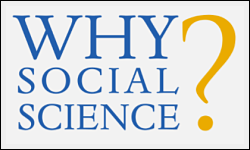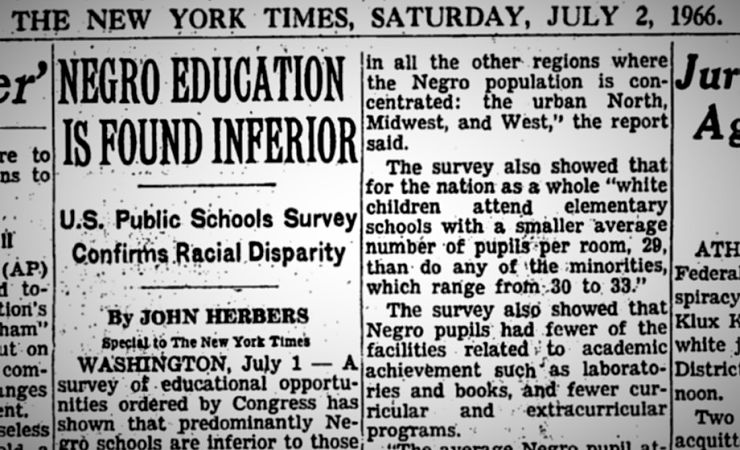 Resources
Resources Why Social Science? To Help Dismantle White Supremacy

The 1966 Coleman Report was our nation’s first big social science project. It gathered and analyzed data from 600,000 students, 60,000 teachers and 4,000 public schools; it was designed to address the nation’s failure to provide “equal education opportunities for individuals by reason of race, color, religion or national origin.” The magnitude of persistent racial inequality in America was not in doubt at the time, nor was there doubt that the social sciences could help to explain the causes of inequity and recommend policies to level the field. In the years since Coleman’s landmark study, the social sciences have abundantly done so. A half-century of increasingly sophisticated research (e.g., on early childhood interventions, residential segregation, and neighborhood effects) and conceptual advances (e.g., critical race theory, intergroup relations, and stereotype threat) have given the country a much deeper understanding of inequality’s causes and consequences.
“A half-century of increasingly sophisticated research (e.g., on early childhood interventions, residential segregation, and neighborhood effects) and conceptual advances (e.g., critical race theory, intergroup relations, and stereotype threat) have given the country a much deeper understanding of inequality’s causes and consequences.”
Despite this progress, it is evident that racism has a stronger hold than we thought possible. The civil rights era hoped to reestablish meaningful citizenship only to find institutional racism had dug in, gerrymandering and voter suppression had replaced poll taxes, a war on crime and a war on drugs resulted in police brutality and a massive incarceration rate. Social science has succeeded in documenting all of this, but our focus on evidence-based policy has underscored (and perhaps even widened) the gap between knowledge and the impact of what we know.

What explains our lack of impact? It can be traced to a research platform that has left little room for a hugely important fact. Racism is evil. It was so in the First Crusade, when Jews were demonized then massacred by White Christians, followed by the joining of slavery to skin color and the hugely profitable (for white people) Atlantic slave trade. Four hundred years later George Floyd was murdered because of his color by a police officer because of his color, as if the White race can do as it will with the Black race. As individuals we are prepared to call this “evil,” though that is not a term found in social science, even in social science focused on racism. If our methods and models cannot get to the essence of institutional racism and white supremacy, we need new methods and a new model.
“If our methods and models cannot get to the essence of institutional racism and white supremacy, we need new methods and a new model.”
It is encouraging that research universities are newly dedicated to increasing their impact on social problems—often under the label “knowledge into action.” Not surprisingly, these universities (mine included) assume that their expertise in social science is capable of taking on racial inequity. Prior ineffectualness is explained away because impact had not yet been an institutional goal, as it now is. This misses the point. The impact agenda, valuable as it is, has not, as yet, incorporated moral reasoning.
Social science progresses along two tracks: one more qualitative and aimed at interpretation, and the other more quantitative and aimed at identifying causation. The interpretive track overlaps the humanities, which allows it to bring moral reasoning into play. The quantitative track is imported from the natural sciences, which, for the most part, leaves moral issues to philosophers and ethicists. Physics tells us that black holes exist and doesn’t concern itself with whether they are moral. Quantitative social science follows this model, in general telling us what is, not what should be. But elsewhere in the natural sciences we find an alternative model. Bioethics has a long history. The Hippocratic Oath “do not harm” is a moral statement, directing us to a scientific expertise capable of integrating a rigorous empiricism with a wide array of applied ethics disciplines. Eugenics, promoted by the Nazis, was banished as an unethical practice, and designer babies today are similarly banned. The gene editing technology CRISPR is closely monitored and controlled—on ethical grounds. Bioethics can teach us something, as can the humanities.
Social science, qualitative and quantitative, should frame research on racism as an interdependent ethical-empirical project, creating a new specialty. “Knowledge to action” is taking us into new territory—into why our research is used, misused, or shelved, unused. Racial injustice is a depressing example of our insights going unused. We have assembled in recent years an astonishingly clear understanding of how criminal justice policy in America pretty much went off the rails in the 1970s, and in the process deepened racial inequity. These insights have not been used, and the lack of use need not be.
Social science has yet to establish a research agenda that fully accounts for the immorality at the very core of racism. Now is the time.































































































